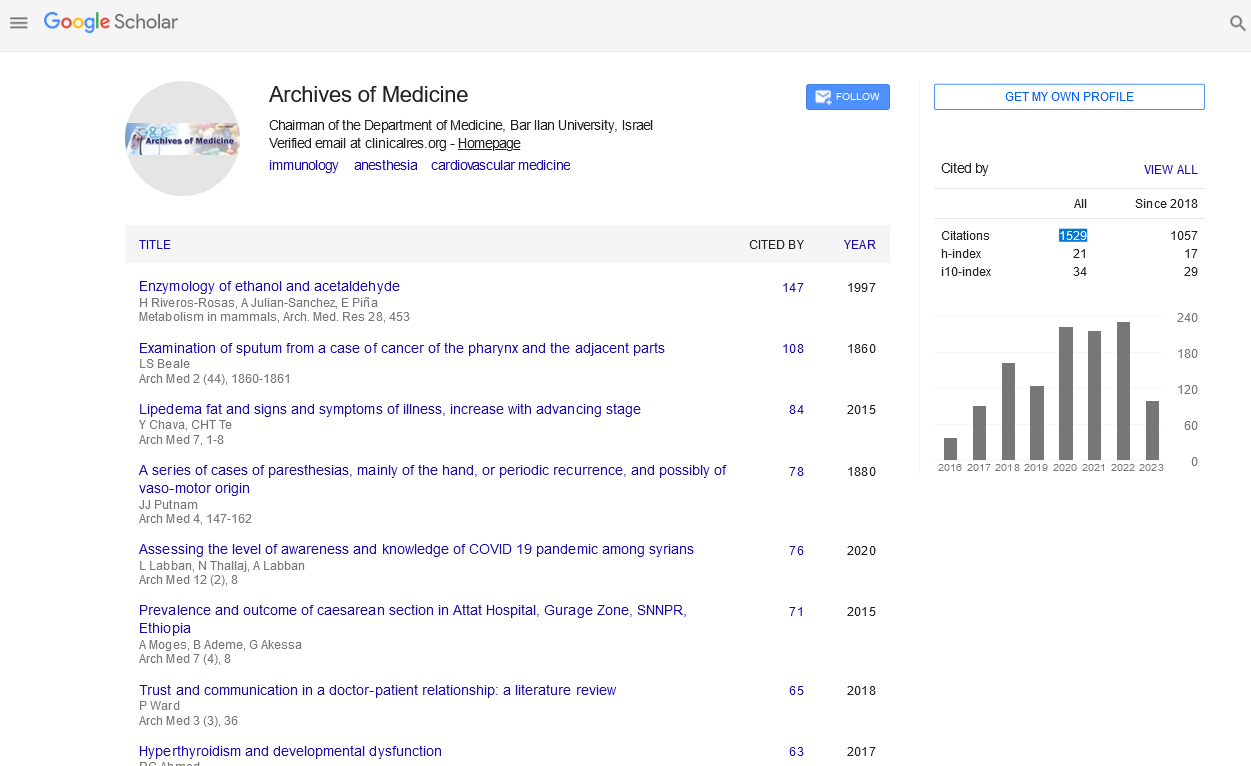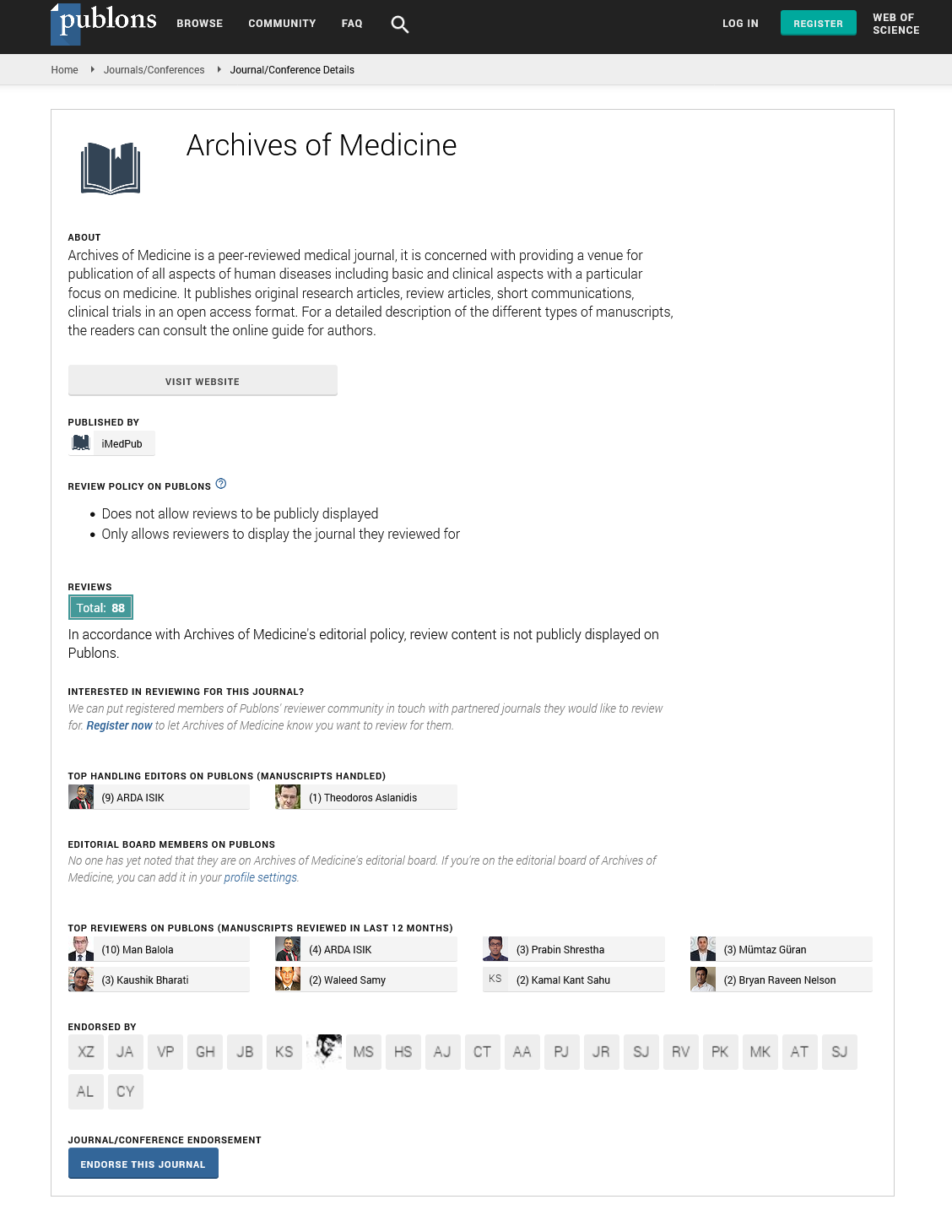JP Meena*
Department of Pediatrics, Maulana Azad Medical College and Lok Nayak Hospital, New Delhi, India
Corresponding Author:
JP Meena
Departmen t of P edia trics, Maulana Az ad Medic al Colleg e and Lok Na y ak Hospit al
New Delhi, India
Tel: +91-8826466408
E-mail: drjpmeena@yahoo.com
Received date: August 26, 2017; Accepted date: August 29, 2017; Published date: August 31, 2017
Citation: Meena JP. Bone relapse in T Lineage acute lymphoblastic leukemia in a child: A case report and review of literature. Arch Med. 2017, 9:4. doi: 10.21767/1989-5216.1000236
Copyright: © 2017 Meena JP. This is an open-access article distributed under the terms of the Creative Commons Attribution License, which permits unrestricted use, distribution, and reproduction in any medium, provided the original author and source are credited.
Keywords
Bone relapse; Acute lymphoblastic leukemia; Child
Introduction
ALL is the most common malignancy in children. It accounts for about one-fourth of all childhood cancers and 72% of childhood leukemia. The majority of pediatric ALL (80% to 85%) is early B-cell type, 15% is T-cell ALL and approximately 2% is mature B-cell/burkitt leukemia [1]. With current advances in treatment, the survival and cure rates of childhood ALL have improved significantly. Despite this progress, medullary and extra medullary relapses remain a concern both during and after therapy. The primary sites of extra medullary relapses are the CNS and the testis. Other location such as eyes, ovary, and kidney are the unusual locations and are increasingly observed as long term survival improves [2].
We present an unusual case of a 7 years old boy who presented with an early bone relapse in the left humerus during maintenance therapy for ALL. The clinical presentation was initially confused with a bone tumor but was later found to be a relapse of the primary disease.
Case Report
A 7 years old male child was diagnosed with T cell ALL in September 2015 when he had presented with fever, hepatosplenomegaly, generalized lymphadenopathy, and mediastinal widening. The white blood cell (WBC) count at diagnosis was 2700/cumm and peripheral smear revealed 32% blasts. The diagnosis was confirmed on bone marrow examination. Immunophenotyping by flowcytometry of the bone marrow aspirate revealed blasts that were positive for CD3, CD5 and CD7 and negative for CD19, CD20, CD10, CD13, CD14, CD33, anti-MPO, and HLA-DR. The cerebrospinal fluid (CSF) was negative for blasts.
He was started on a four drug induction with dexamethasone, L-asparaginase, vincristine and daunorubicin. After completion of 5 weeks of induction therapy the bone marrow was in remission and the minimal residual disease was negative. Patient was further treated with consolidation therapy consisting of cyclophosphamide, L-asparaginase, cytarabine, vincristine and 6-mercaptopurine. His course during subsequent chemotherapy, including interim maintenance and delayed intensifications was unremarkable. He was three months into maintenance therapy, when he presented with left arm swelling.
The swelling had appeared over lower part of left am in a week and was progressively increasing. On examination he had an irregular bony swelling over lower part of left arm that was painful but not associated with fever. The initial blood counts were normal and the X-ray was normal. The child was initially managed with paracetamol and antibiotics. Over the next two weeks swelling gradually increased in size. He then underwent a repeat X-ray of left arm that showed a soft tissue swelling. The MRI of the arm revealed a soft tissue swelling resembling a malignant infiltration. Histopathological examination of the biopsy from the swelling was suggestive of T-cell ALL (immature lymphoid cells, immunopositive for CD3 and negative for CD20, Tdt and CD34).
He also developed pallor and his physical examination revealed a new splenomegaly. His peripheral smear showed pancytopenia. Bone marrow aspiration showed complete replacement of cellularity by blasts on examination. The CSF didn’t reveal any blasts. The family was counseled regarding further treatment options and prognosis and they opted for palliative care due to personal and financial reasons.
Discussion
Patients with T- ALL have significantly higher rates of induction failure, early relapse and a shorter median time to relapse compared to B-ALL [3]. Relapses in leukemia occur most commonly in the bone marrow followed by CNS and the testes. Other extra medullary sites reported in literature include the breast, bone, skin and subcutaneous tissue, pancreas, prostate, epididymis, head and neck, uterus and adnexa, gut, kidney, eye, and lungs [4-8].
The pathogenesis of bone relapse and other forms of extra medullary leukemia is incompletely understood. The extra medullary relapse could be due to poor penetration of chemo therapy at anatomic sites of leukemic proliferation [9].
Murray et al reviewed 11 cases of isolated bone relapse in ALL. They found that the median age of diagnosis of relapse was 7 years and the median time from diagnosis to relapse in the bone was also 7 years. The most common bone affected was the mandible (n=5) followed by femur (n=3), fibula (n=1), rib (n=1) and the metatarsal (n=1). Out of eleven, 9 patients received chemotherapy plus radiation, 1 patient received chemotherapy only, and another 1 patient received chemotherapy plus radiation and autologous bone marrow transplantation. Out of eleven, 6 patients died (5 due to disease and 1 due to sepsis), 4 patients achieved second remission and one other had bone marrow relapse after 1 year of second remission [10].
Padmanjali et al. [11] from India similarly reported a 6.5 years old male child with T-cell ALL, who presented with a relapse in the left tibia seven months after completion of therapy.
The overall prognosis of patients of isolated bone relapse in ALL is poor. Hence, isolated ALL bone relapses in children should be treated aggressively with chemo radiotherapy and bone marrow transplantation [10].
In a patient of ALL presenting with a bone swelling during or after completion of therapy, one should suspect of bone relapse.
20244
References
- Swerdlow SH, Campo E, Harris NL (2008) WHO classification of tumors of haematopoietic and lymphoid tissues. IARC, Lyon, France.
- Bunin NJ, Pui C, Hustu O, Rivera GK (1986) Unusual extra medullary relapses in children with acute lymphoblastic leukemia. J Pediatr 109: 665-668.
- Goldberg JM, Silverman LB, Levy DE (2003) Childhood T-Cell acute lymphoblastic leukemia: The dana-farber cancer institute acute lymphoblastic leukemia consortium experience. J Clin Oncol 21: 3616-3622.
- Sallan SE (1982) T-cell acute lymphoblastic leukemia in children. Hamatol Bluttransfus 26: 121-123.
- Cunningham I (2006) Extramedullary sites of leukemia relapse after transplant. Leuk Lymphoma 47: 1754-1767.
- Wang GX, Liao JL, Zhang D (2015) Relapse of acute lymphoblastic leukemia in the pancreas after bone marrow transplant. World J Pediatr 11: 389-391.
- Maruyama T, Yamamoto S, Nojima M (2007) Extramedullary relapse of acute lymphoblastic leukemia in childhood to the prostate. Int J Urol 14: 447-449.
- Bourne AE, Wayment RO, Tarter TH (2010) Isolated relapse of acute lymphoblastic leukemia in the epididymis: A rare sanctuary site. J Clin Oncol 28: e327-e328.
- Barcos M, Lane W, Gomez GA, Han T, Freeman A, et al. (1987) An autopsy study of 1206 acute and chronic leukemias. Cancer 60: 827-837.
- Murray JC, Gmoser DJ, Barnes DA (1994) Isolated bone relapse during hematologic remission in childhood acute lymphoblastic leukemia: Report of a metatarsal relapse and review of the literature. Med Pediatr Oncol 23: 153-157.
- Padmanjali KS, Bakhshi S, Thavaraj V (2004) Bone relapse in acute lymphoblastic leukemia. Indian J Pediatr 71: 555-557.






